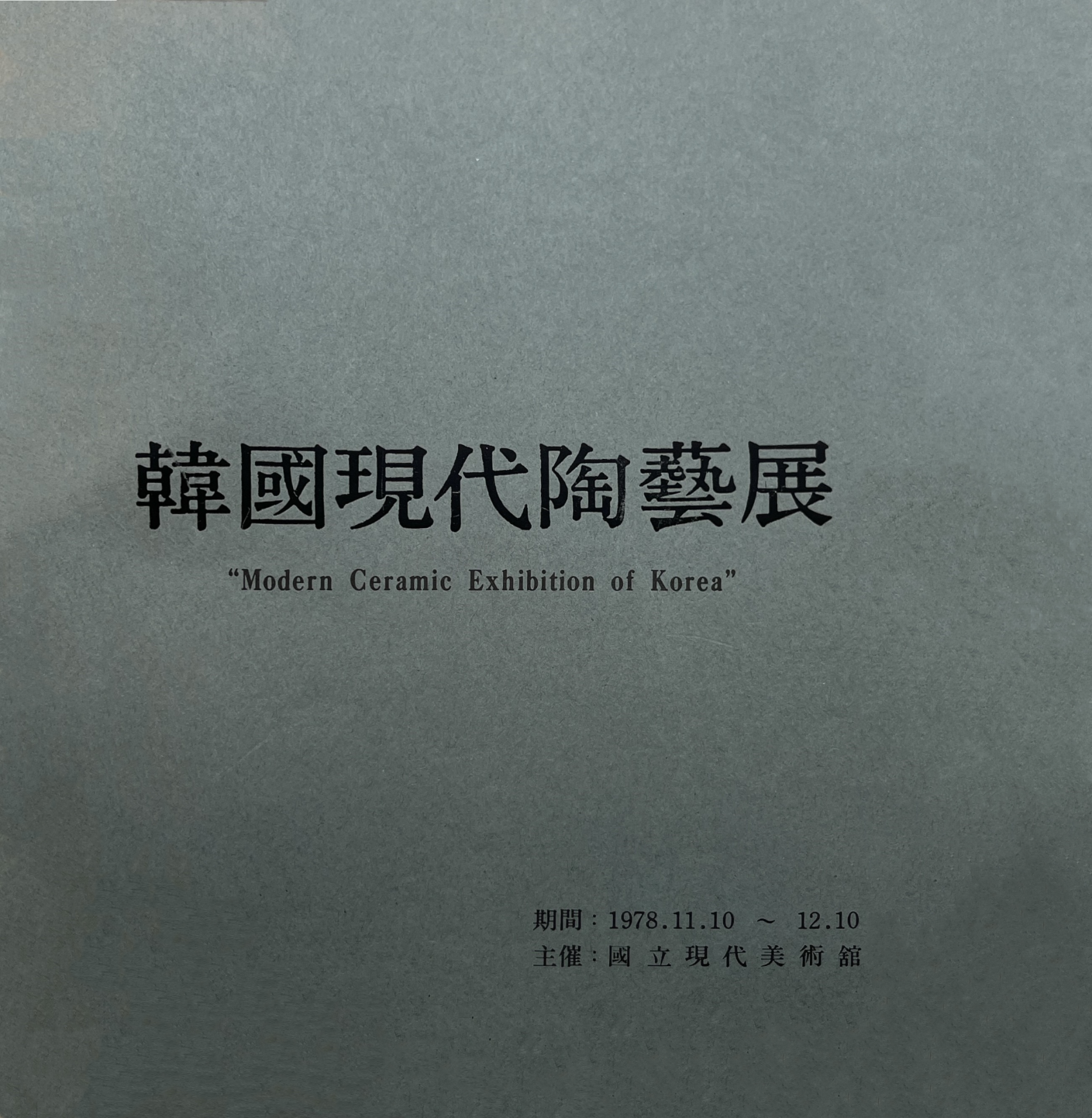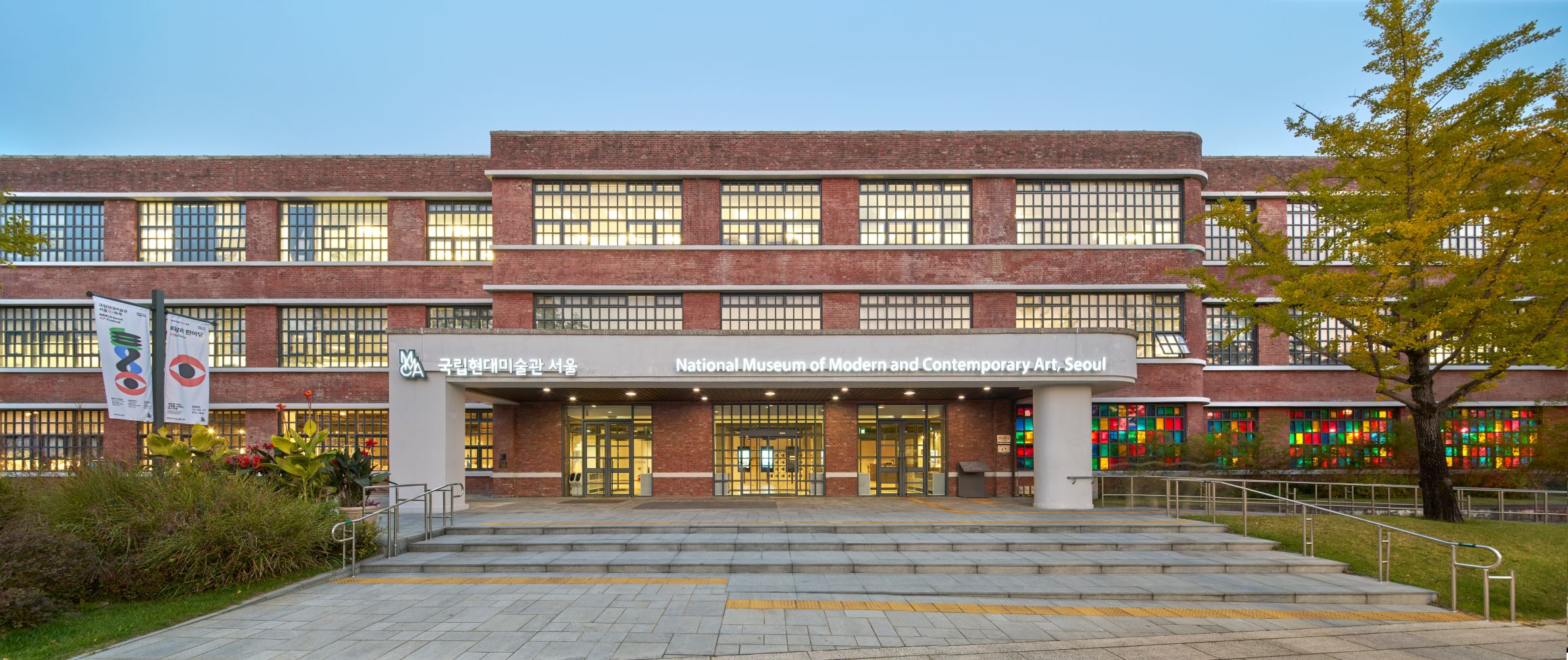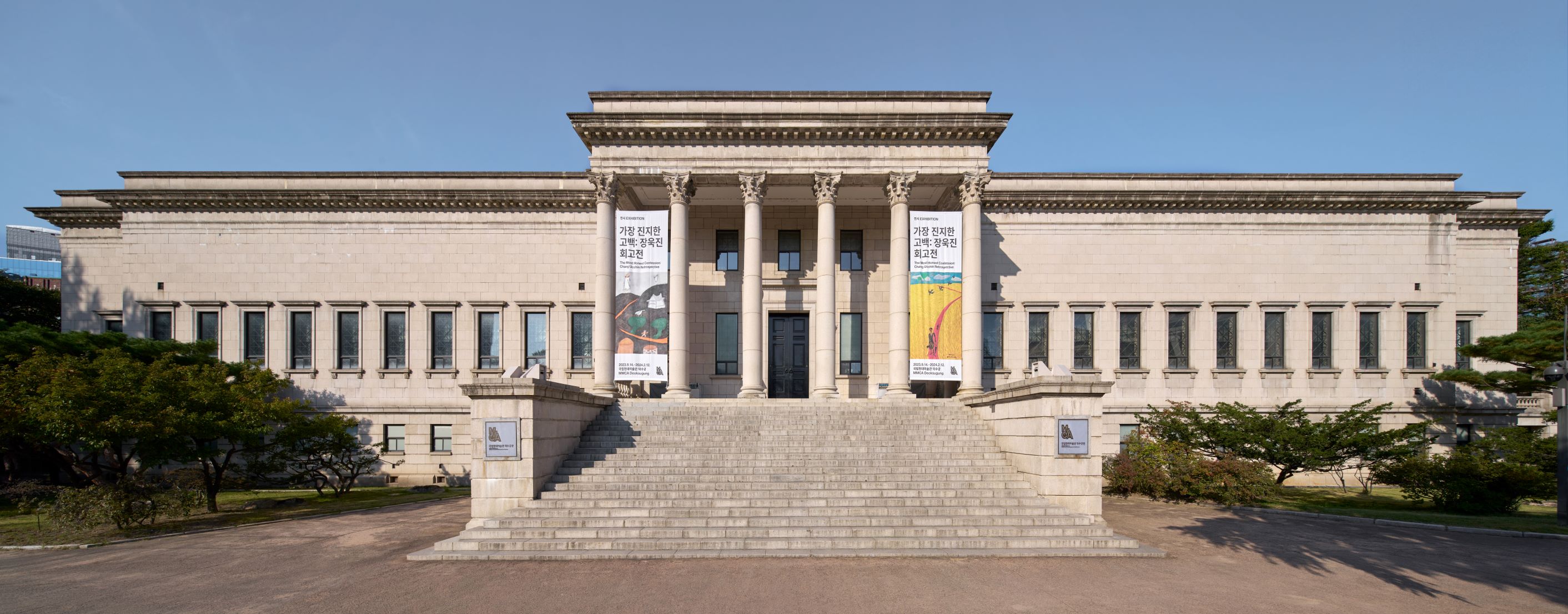
Modern Ceramic Exhibition of Korea, Catalog, 1978, MMCA Art Library Collection
Modern Ceramic Exhibition of Korea
* Source: MMCA
Related
-

National Museum of Modern and Contemporary Art, Korea (MMCA)
A national museum established in 1969 that researches, collects, and exhibits modern and contemporary art. As of 2018, there are branches in Gwacheon, Deoksugung, Seoul, and Cheongju. When first established, the National Museum of Modern Art (now MMCA) was located within Gyeongbokgung palace. In 1973, the museum moved to the East Wing of the Deoksugung Seokjojeon building. Then, in 1986, the museum moved to its current location in Gwacheon, to occupy a new building equipped with an outdoor sculpture exhibition space, and has since opened a new chapter in Korean art. The perceived need for a space to focus specifically on Korean contemporary art led to the establishment of further site, the National Museum of Contemporary Art, Deoksugung in 1998. In November 2013, a further demand for contemporary art exhibitions led to the establishment of another Seoul branch being created in the Defense Security Command building in Sogyeok-dong, Jongno-gu, which has since its inception engaged in multifaceted exhibitions of both domestic and overseas contemporary art. Also, as a further component of the MMCA complex, a disused tobacco factory in Cheongju was remodeled to provide a home to the National Art Storage Center.
-

Deoksugung Museum of Art
A term that refers to two separate art museums that have existed in the grounds of Deoksugung palace at different times. First, the Yi Royal Family Museum, which was built in 1938 and renamed the Deoksugung Museum of Art after independence in 1948. This iteration of the Museum was merged with the National Museum of Korea in 1969. Separately, in 1998 a branch of the National Museum of Contemporary Art, Korea (now MMCA) was established at this location, and also named the Deoksugung Museum of Art. In 2013, the official name of the branch was changed to the National Museum of Modern and Contemporary Art, Deoksugung but some people still use the previous name, Deoksugung Museum of Art.
-

Korean Contemporary Ceramic Artists Association
The Korean Society of Modern Ceramic Artists (Hanguk hyeodae doyegahoe, KSMCA) was founded in October 1978 by nine ceramists: Hwang Jonggu, Won Daichung, Hwang Chongnye, Kwon Soonhyung, Kang Suhwa, Chung Damsun, Yim Mugeun, Cho Chunghyun, and Rhee Boo-ung. At the time of its foundation, it was named the Korean Society of Ceramic Artists. Hwang Jonggu served as the first president, and its official exhibition was held in 1979, the year after the foundation. The First Korean Society of Ceramic Artists Exhibition (Shinsegae Gallery, 1979) was attended by a total of nine artists. By the Fourth Korean Society of Modern Ceramic Artists Exhibition (Shinsegae Gallery, 1983), the number of participating artists increased to fifty-two. From that year onward, the name of the group was changed to the Korean Society of Modern Ceramic Artists, further solidifying its character as an exhibition for contemporary ceramic artists. Since 1984, the KSMCA held the first modern ceramics seminar led by then current university professors. It has also been engaged in diverse activities, including the production of video documentation of its senior members. In 1985, the KSMCA arranged an exchange exhibition of ceramics with Germany at the MMCA, paving the way for international exhibitions. In addition, it conducted inspections of ceramic factories and ran international ceramic seminars and summer training programs. In 1992, it published the bulletin Contemporary Ceramics as a part of its academic project. In and after the 2000s, the number of participating artists in the regular exhibitions grew to more than 150. As the largest organization of ceramic artists in South Korea, the KSMCA has been engaged in various activities to explore the development of Korean contemporary ceramics and promote academic projects.
Find More
-

Chung Kyu
Chung Kyu (1923-1971) was born in Goseong, Gangwon-do. He graduated from Gyeonggi Public Commercial School in 1941 and moved to Japan to attend the Department of Western Painting at Teikoku Art School. He returned to Korea in 1944 and stayed in Busan during the Korean War, moving to Seoul to be a researcher at the Korean Visual Art Research Institute from 1954 to 1962. He studied prints and ceramics in Rochester, New York, USA on a one-year invitation from the Rockefeller Foundation. After he came back, he expanded his art from painting to prints and ceramics. He was a founding member of the Korea Art Critics Association in 1956, the Korea Prints Association [Hanguk panhwa hyeophoe] in 1958, and the Korean Art Critics Association in 1960. He established the Institute of Korean Traditional Ceramics Craft in 1960. He contributed his prints to the Contemporary Art Exhibit sponsored by Chosun Ilbo and created ceramic murals at Oyang Building and Namsan Liberty Center, leaving an important mark on the development of public art in Korea. He worked as an art lecturer at Ewha Woman’s University from 1955 to 1961, at the department of craft, Hongik University from 1960 to 1963, and as a professor of the Department of Ceramics at Kyung Hee University from 1963 to 1971.
-

Hwang Jonggu
Hwang Jonggu (1919–2003) was a ceramist active from the second-half of the 1950s through the second-half of the 1990s. He was born as the son of the celadon master Hwang Inchun (1894–1950) in Seoul in 1919. He took a course at the annex of the Seto Institute of Ceramics in Japan in 1939. After returning to Korea, he became a teacher in the ceramics department of the Kaesong Public Industrial School. From 1959, he served as a professor of the Ceramics Department in the College of Art at Ewha Womans University for twenty-five years. His oeuvre in and after the late 1950s centered on developing his father’s celadon and reinterpreting it with a modern twist. In May 1959, Hwang founded the Research Institute of Ceramics [Doye yeonguso] affiliated with the Ceramics Department at Ewha Womans University and served as its director. There, he selected outstanding clay from all over the country, focused on the production of celadon and white porcelain, and published the academic journal Doye yeongu (Study of ceramic art). Since the 1960s, he engaged himself in creation, research, education, and experimentation that maintained the legacy of traditional ceramics while adopting the trend of Western contemporary ceramics. Among the prizes he won are the Seoul Cultural Award (1966), the Presidential Award for the twenty-fifth anniversary of Korea’s liberation from Japan (1970), and the Korean Educational Achievement Award (1984). He participated in several exhibitions, such as the Korean Contemporary Ceramics in 1973, the Solo Exhibition at Daimaru Department Store Gallery in Tokyo, Japan, in 1980, and the Invitational Exhibition at the Beijing Cultural Center, China, in 1992. In 1998, he created a thousand celadon Buddhas for Mireuksa Temple in Seosan, Chungcheongnam-do Province. He also served as a recommended artist and judge for the National Art Exhibition (Gukjeon) (1966–1983), an advisor to the Korean Contemporary Ceramic Artists Association (Hanguk hyeondae doyegahoe) (1984–2003), chairman of the jury panel for the Korean Crafts Competition (1990), and a member of the operating committee for the Seoul Shinmun Literary and Art Competition (1994). In 2005, the posthumous special exhibition The Way of the Potter—Hwang Jong-gu, Ceramist, Scientists and Artist held at Ewha Womans University Museum.






